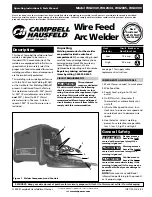
page 9
a 3 stage acceleration curve. The encoder has 24 po-
sitions. Turning it one revolution slowly will result in
a change of 12dB (24 x 0.5dB). As the rotation speed
increases, each step goes from 0.5dB to 2.0dB and
then to 4.0dB. This allows not only precise control but
also convenience when large volume changes are
desired.
Any changes made are reflected in the 7-segment
display. Level range is from 0.0 to 99.5. NOTE: The
least significant digit’s decimal point (.) is used to
in0.5dB increments.
About s-lock™
The improved s-Lock™ is our proprietary PLL (Phase
Lock Loop) circuitry that has been specifically devel-
oped for the m920 and its big brother the m905 .
When using the TOSLINK, S/PDIF, or AES3 digital
inputs, the digital audio stream contains an embed-
ded clock that can contain various forms of jitter. The
s-Lock PLL will lock to this clock source and provide
an extremely stable and ultra-low jitter clock to run
the DACs.
s-Lock™ is a crystal-based PLL used for regenerating
the incoming digital clock. The crystals used have ex-
tremely low intrinsic jitter and are capable of locking
to sample rates of up to 192kHz. When the digital in-
put selected for the DAC is active, the s-Lock circuitry
automatically captures the incoming recovered
clock from the AES3, S/PDIF, or TOSLINK connectors.
Once phase-lock with the incoming signal has been
achieved, the DAC’s, which have been running off the
original clock, are switched to run off the ultra-low
jitter s-Lock system clock. If at any time s-Lock is lost
or not achieved, the DAC’s are run off the original
clock. The s-Lock system can effectively lock to input
sample rates of 44.1kHz or 48kHz +/- 5Hz, 88.2kHz or
96kHz +/- 10Hz and 176.4kHz or /- 20Hz.
If the incoming digital audio signal clock frequency
is outside of these tolerances, the s-Lock circuit
will not lock and the s-Lock indicator on the m920
will extinguish. The m920 features a second PLL in
addition to the s-Lock circuit. This circuit provides
a wide bandwidth lock range and achieves excel-
lent recovered clock jitter performance even when
s-Lock is inactive. Note that in USB mode, the m920
is the clock master so there is no need to “lock” to an
incoming signal.
About x-Feed (crossfeed)
When listening to loudspeakers in a room, your
left ear hears sound primarily from the left speaker
(and vice versa) but also receives a signal from the
right speaker at a lower level and with some time
delay compared to the right ear. As well, the right
speaker sound that reaches the left ear does not
have a flat frequency response as the sound waves
have traveled around the shape of your head before
reaching your left ear. The brain uses delay, level and
frequency response characteristics to process the
location of a sound and hence, create an aural image.
When listening through headphones, each ear only
hears the sound from one transducer and the mix-
ing of signals between the ears does not exist. In this
situation the brain is left without many of the psycho
acoustic clues required to generate a properly distrib-
uted image and an accurate sound stage. The result
is that instruments seem to cluster in the far left, far
right or center of your head. Since the vital clues are
absent, the brain has a difficult time deciding how
to process the sounds coming from the headphone,
which can result in listening fatigue when listening
for extended periods of time.
The m920 contains new crossfeed circuitry which
electronically simulates the signal crossfeed that
occurs in a real acoustic space and helps the brain es-
tablish instrument locations across the entire sound
stage. While it is difficult to perfectly model the
very complex level, delay and frequency response
characteristics of the head, the crossfeed circuitry in
the m920 gives the brain some of the basic clues it
needs and the result is a very pleasing simulation of
an acoustic space while maintaining the tonality and
balance of the original source.








































